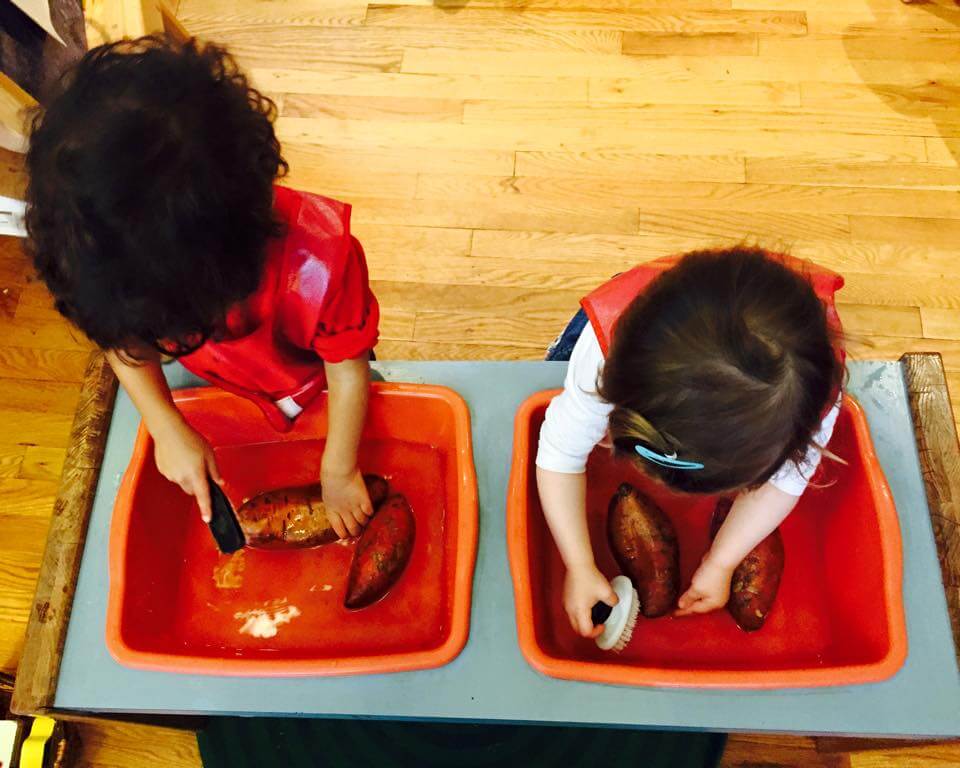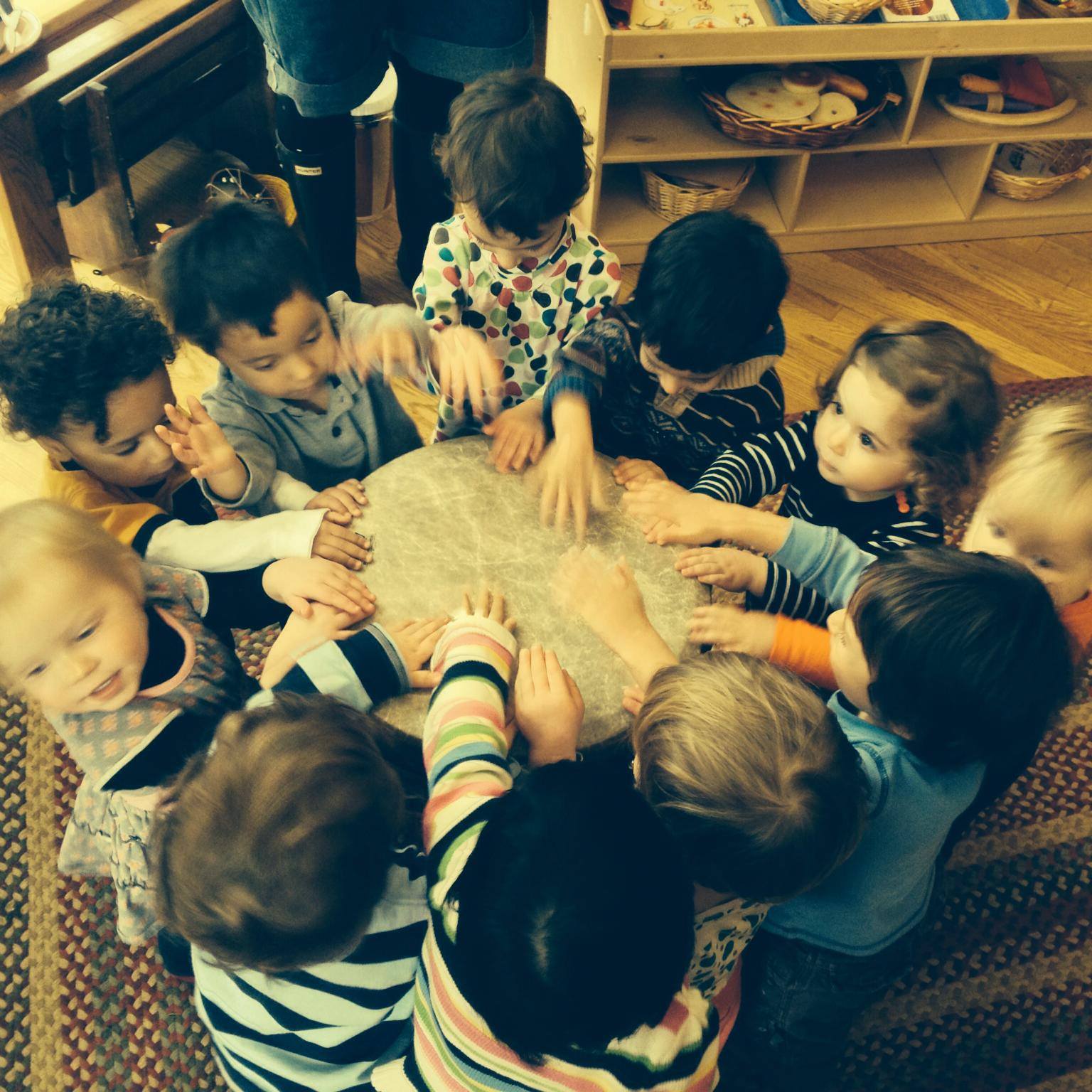Our Daily Routine
Our daily routine is arranged to offer a consistent order to our days, however, we gauge our day according to the children’s needs, interests, and focus. It is our job to observe each child, daily, and focus on the needs of each individual and the group as a whole community. Here is an example of a day in the life of an OHM toddler class:

8:15 – 9:00: Children are dropped off, leaving their parents at the door and entering our environment.
8:15 – 11:00: Morning work period. This includes individual lessons, independent work selection, going outside for projects, self-serve snack and preparing our lunch.
11:00 – 11:30: Group meeting, circle time, daily discussions, celebrations of cultural events, books, and songs.
11:30: Family style lunch is served.
12:00: Nap routine begins. Kids get their own nap mats and prepare their area (and themselves) for rest.
12:15 – 2:30: Rest time.
2:30 – 3:00: Wake up routine begins. The children put away their nap mats and afternoon snack is prepared.
3 – 6: Afternoon work period. Activities vary; trips to playgrounds, museums, restaurants, cooking lessons, art projects, gardening and planting, movement focused activities and other forms of enrichment.
Our day can be categorized into three main segments: Morning Work Period, Nap & Afternoon Work Period. Here is a summary of each segment along with our approach:

 it as much like their home away from home as possible.
it as much like their home away from home as possible.

